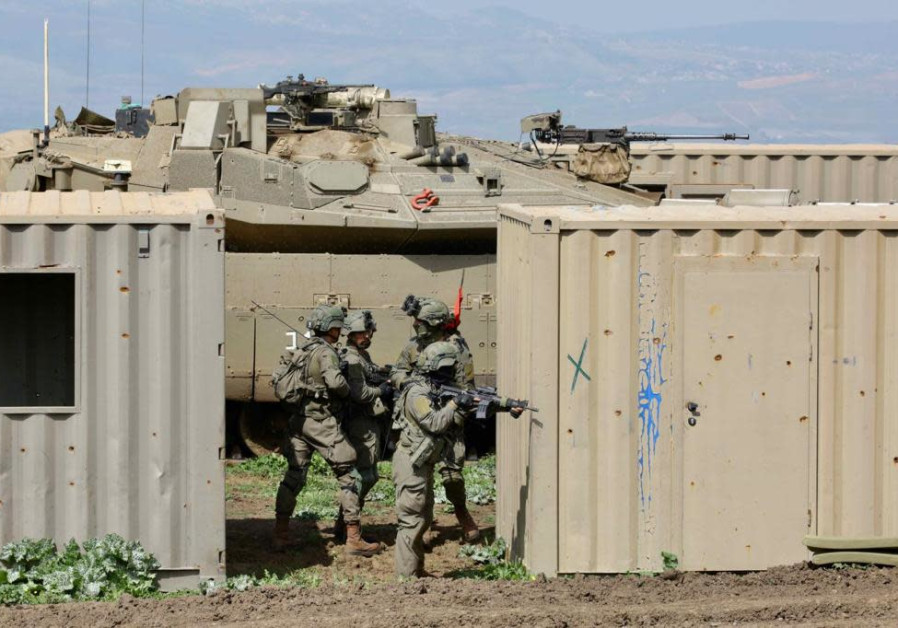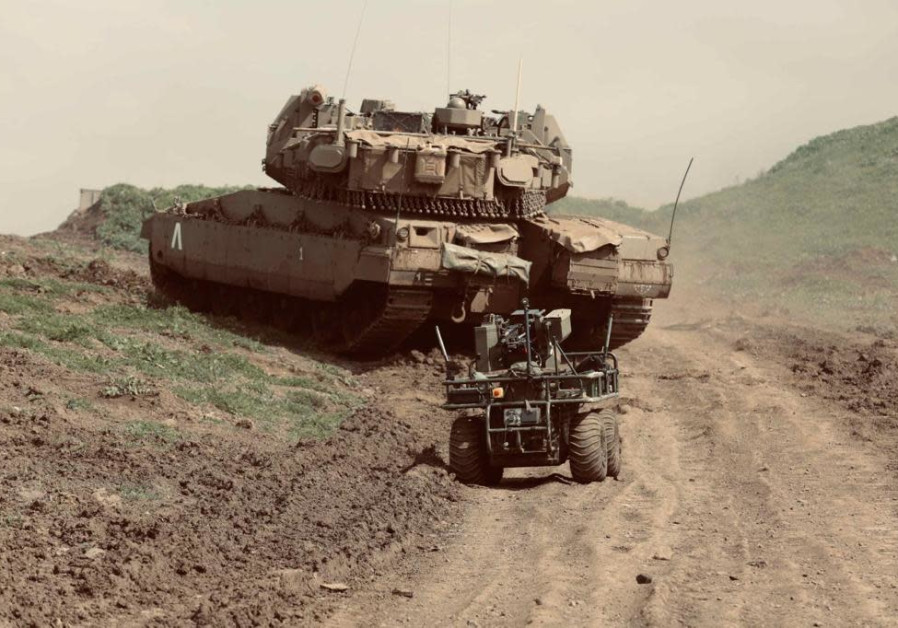A “pack of drones” in each infantry company, sophisticated sharp-shooting weapons, and a new set of skills that every combat soldier will learn are just a few elements that the IDF’s new innovative Multidimensional Unit “Ghost” has been working on over the last year.
The unit was established as part of the military’s “Tnufa” multi-year plan initiated by IDF Chief of Staff Lt.-Gen. Aviv Kohavi, in line with a new understanding of the multi-dimensionality of the modern battlefield.

According to this perception, the battlefield is not one-dimensional, and the battle cannot be fought one scene at a time. The battlefield includes terrain underground, where enemy operatives will use tunnels; terrain above ground, where the army will fight enemy soldiers; near the ground, where the enemy will use drones for attack and intelligence-collection purposes; and at air and sea, where the army will meet enemy aircraft, navy vessels and elite commando forces.
Based on this battlefield scenario, the IDF understands that it needs to be able to engage targets quickly. This means getting forces to know how to communicate with one another, speak the same language, and make real-time intelligence available for them when needed. For this purpose, the IDF established the “Ghost,” which includes elite-combat soldiers, tanks, missile batteries, and air force pilots.
The unit has two main purposes: to be an elite unit during wartime, and to serve as a “General Staff laboratory” while developing concepts, combat doctrines and new skills that will then be adopted across other combat units.
This week the unit completed its fourth milestone training out of five. The last part of its training is scheduled for the summer, when the IDF will hold its month-long “war drill.” Once it completes this training, it is expected to become fully operational.

The unit is composed of experienced soldiers and officers who bring their operational knowledge to the field. They work closely with the IDF Intelligence Directorate and Israeli defense contractors such as Rafael and Elbit, and they have their own soldiers who develop applications and other technologies that are later used by the combat soldiers.
One of the main tools used to promote the multidimensional perception is Elbit’s Digital Army 750 system, a communication, command and control platform that can be used by all military wings and shows the location of both friendly and enemy forces in the field, based on intelligence.
Since the Second Lebanon War in the summer of 2006, the IDF understood that making intelligence available to commanders in the field – at the company and battalion level – is crucial to achieving goals and winning the battle.
A senior IDF officer recently addressed the issue saying that as part of these efforts, the army “created a system in which all the relevant intelligence was gathered in a ‘bucket,’ ready to be handed over to the field commanders. When the time comes and they need the intelligence, we will take the lid off of the ‘bucket’ and provide the necessary information to whomever needs it.”
Digital Army 750 is already operational in some units, including the Golani Brigade, the 7th Armored Brigade, the Commando “Oz” Brigade, and 36th Division and the Multi-Domain unit.

Another skill that was already copied from the unit into the IDF is the “Sufa – assistance and attack” force.
This force is composed of a ground artillery officer, an aerial attack officer (an air force pilot) and infantry soldiers. The force uses advanced observation tools, including drones, and their goal is to spot enemy targets, direct attack forces at them – an aircraft or a missile battery – and “close fire circles as quickly as possible,” an officer explained.
The new technological developments allow the forces on the ground to “summon” an air force attack within minutes and cut the process that used to be much longer.
This model of “Sufa” was recently implemented in the Golani Reconnaissance Battalion, and is meant to be adopted by dozens of their units through 2021 and 2022.
A senior IDF Ground Forces source said that this major IDF transition came after the realization by the army’s senior command that the new IDF draftees are from the “digital generation.” They are multi-taskers, he said, who can easily learn how to operate machines and new technologies.
In this experiment lab, the Multi-Domain unit soldiers are trained to do more than one profession; some of them are trained to be part of an observation force, an attack force and to neutralize bombs.
“It is a unit with the manpower of a battalion, but the firepower of a brigade,” the source said. “We want them to always be one step ahead of the rest of the army. They should be the 3.0 version when the elite units are 2.0 and the rest are 1.0. The next step should be teaching the army the new skills, and at the same time to stay innovative and keep our superiority. So we are always on the move.”